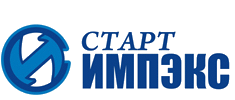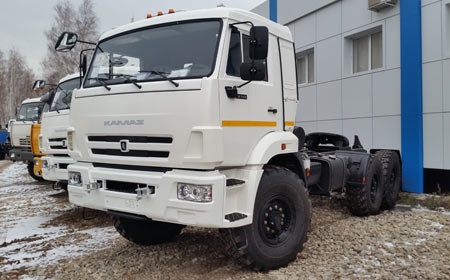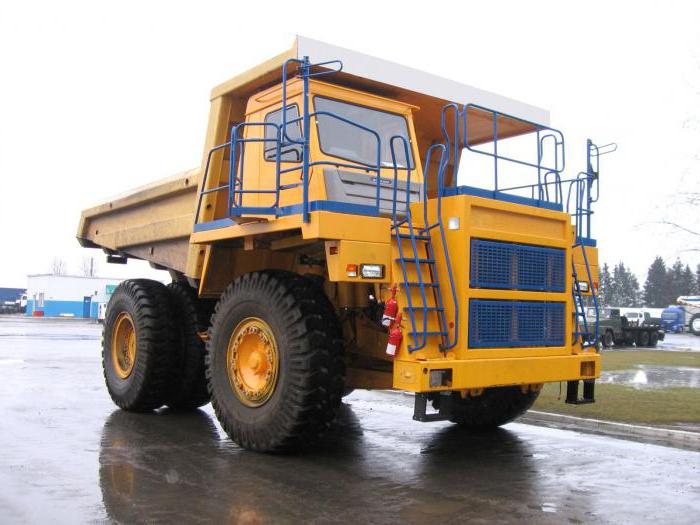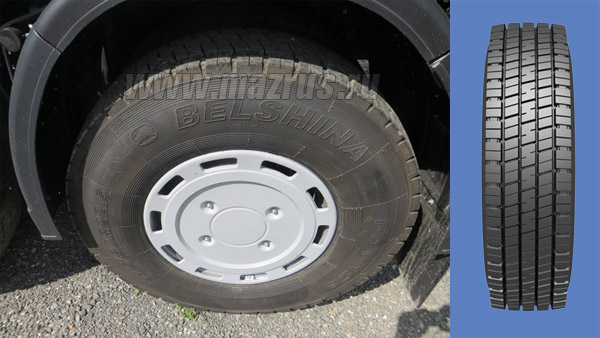|
||||
|
|
звонок бесплатный
Наши сотрудники:
[email protected]
Екатерина - специалист по продаже а/м КАМАЗ
 [email protected]
[email protected]






Техника в наличии
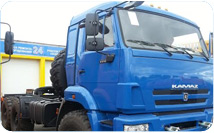
Тягач КАМАЗ 44108-6030-24
2014г, 6х6, Евро3, дв.КАМАЗ 300 л.с., КПП ZF9, бак 210л+350л, МКБ,МОБ,рестайлинг.
цена 2 220 000 руб.,
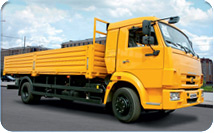
КАМАЗ 4308-6063-28(R4)
4х2,дв. Cummins ISB6.7e4 245л.с. (Е-4),КПП ZF6S1000, V кузова=39,7куб.м., спальное место, бак 210л, шк-пет,МКБ, ТНВД BOSCH, система нейтрализ. ОГ(AdBlue), тент, каркас, рестайлинг, внутр. размеры платформы 6112х2470х730 мм
цена 1 950 000 руб.,

Самосвал КАМАЗ 6520-057
2014г, 6х4,Евро3, дв.КАМАЗ 320 л.с., КПП ZF16, ТНВД ЯЗДА, бак 350л, г/п 20 тонн, V кузова =20 куб.м.,МКБ,МОБ, со спальным местом.
цена 2 700 000 руб.,
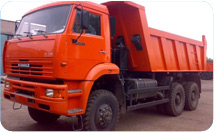
Самосвал 6522-027
2014, 6х6, дв.КАМАЗ 740.51,320 л.с., КПП ZF16,бак 350л, г/п 19 тонн,V кузова 12куб.м.,МКБ,МОБ,задняя разгрузка,обогрев платформы.
цена 3 190 000 руб.,
СУПЕР ЦЕНА
на АВТОМОБИЛИ КАМАЗ
| 43118-010-10 (дв.740.30-260 л.с.) | 2 220 000 |
| 43118-6033-24 (дв.740.55-300 л.с.) | 2 300 000 |
| 65117-029 (дв.740.30-260 л.с.) | 2 200 000 |
| 65117-6010-62 (дв.740.62-280 л.с.) | 2 350 000 |
| 44108 (дв.740.30-260 л.с.) | 2 160 000 |
| 44108-6030-24 (дв.740.55,рест.) | 2 200 000 |
| 65116-010-62 (дв.740.62-280 л.с.) | 1 880 000 |
| 6460 (дв.740.50-360 л.с.) | 2 180 000 |
| 45143-011-15 (дв.740.13-260л.с) | 2 180 000 |
| 65115 (дв.740.62-280 л.с.,рест.) | 2 190 000 |
| 65115 (дв.740.62-280 л.с.,3-х стор) | 2 295 000 |
| 6520 (дв.740.51-320 л.с.) | 2 610 000 |
| 6520 (дв.740.51-320 л.с.,сп.место) | 2 700 000 |
| 6522-027 (дв.740.51-320 л.с.,6х6) | 3 190 000 |

подробнее про услугу перегона можно прочесть здесь.

|
Нужны самосвалы? Обратите внимание на Ford-65513-02. |
КАМАЗы в лизинг
ООО «Старт Импэкс» имеет возможность поставки грузовой автотехники КАМАЗ, а так же спецтехники на шасси КАМАЗ в лизинг. Продажа грузовой техники по лизинговым схемам имеет определенные выгоды для покупателя грузовика. Рассрочка платежа, а так же то обстоятельство, что грузовики до полной выплаты лизинговых платежей находятся на балансе лизингодателя, и соответственно покупатель автомобиля не платит налогов на имущество. Мы готовы предложить любые модели бортовых автомобилей, тягачей и самосвалов по самым выгодным лизинговым схемам.Контактная информация.
г. Набережные Челны, Промкомзона-2, Автодорога №3, база «Партнер плюс».
тел/факс (8552) 388373.
Схема проезда
Строительно-дорожные машины. Строительно дорожные машины
Строительно-дорожные машины - WikiVisually
1. Экскаватор – Excavators are heavy construction equipment consisting of a boom, dipper, bucket and cab on a rotating platform known as the house. The house sits atop an undercarriage with tracks or wheels and they are a natural progression from the steam shovels and often mistakenly called power shovels. All movement and functions of an excavator are accomplished through the use of hydraulic fluid, with hydraulic cylinders. Due to the actuation of hydraulic cylinders, their mode of operation is fundamentally different from cable-operated excavators which use winches. Excavators are also called diggers, JCBs, mechanical shovels, or 360-degree excavators, tracked excavators are sometimes called trackhoes by analogy to the backhoe. In the UK, wheeled excavators are sometimes known as rubber ducks, the smaller ones are called mini or compact excavators.0 m³. Generally, the 3 pumps used in excavators consist of 2 Variable displacement piston pumps, the alignment of the pumps in the excavator unit changes with different manufacturers using different formats. The two main sections of an excavator are the undercarriage and the house, the house attaches to the undercarriage by way of a center pin. High pressure oil is supplied to the hydraulic motors through a hydraulic swivel at the axis of the pin. The main boom attaches to the house, and can be one of different configurations, Most are mono booms. Some others have a boom which can also move left. Another option is a hinge at the base of the boom allowing it to hydraulically pivot up to 180° independent to the house, however, attached to the end of the boom is the stick. The stick provides the force needed to pull the bucket through the ground. The stick length is optional depending whether reach or break-out power is required, on the end of the stick is usually a bucket. A wide, large capacity bucket with a cutting edge is used for cleanup and levelling or where the material to be dug is soft. A general purpose bucket is generally smaller, stronger, and has hardened side cutters and teeth used to break through hard ground, buckets have numerous shapes and sizes for various applications. There are also many other attachments which are available to be attached to the excavator for boring, ripping, crushing, cutting, lifting, etc. Before the 1990s, all excavators had a long or conventional counterweight that hung off the rear of the machine to provide more digging force and this became a nuisance when working in confined areas
2. Бульдозер – Bulldozers can be found on a wide range of sites, mines and quarries, military bases, heavy industry factories, engineering projects and farms. The term bulldozer correctly refers only to a tractor fitted with a dozer blade, a very small bulldozer is sometimes called a calfdozer, Google search for images. Most often bulldozers are large and powerful tracked heavy equipment, the tracks give them excellent ground holding capability and mobility through very rough terrain. Wide tracks help distribute the weight over a large area. Extra wide tracks are known as tracks or LGP tracks. Bulldozers have transmission systems designed to take advantage of the track system, another type of bulldozer is the wheeled bulldozer, which generally has four wheels driven by a 4-wheel-drive system and has a hydraulic, articulated steering system. The blade is mounted forward of the joint, and is hydraulically actuated. The bulldozers primary tools are the blade and the ripper, the word bulldozer is sometimes used inaccurately for other similar construction vehicles such as a large front loader. The bulldozer blade is a metal plate on the front of the tractor, used to push objects. Dozer blades usually come in three varieties, A straight blade which is short and has no lateral curve and no side wings, a universal blade which is tall and very curved, and has large side wings to carry more material. An S-U combination blade which is shorter, has less curvature and this blade is typically used for pushing piles of large rocks, such as at a quarry. Blades can be fitted straight across the frame, or at an angle, the bottom edge of the blade can be sharpened, e. g. to cut tree stumps. Sometimes a bulldozer is used to push another piece of moving equipment known as a scraper. Many dozer blades have a center section with this purpose in mind. In military use, dozer blades are fixed on combat engineering vehicles and can optionally be fitted on other vehicles, Dozer blades can also be mounted on main battle tanks, where it can be used to clear antitank obstacles, mines, and dig improvised shelters. Combat applications for dozer blades include clearing battlefield obstacles and preparing fire positions, the ripper is the long claw-like device on the back of the bulldozer. Rippers can come as a single or in groups of two or more, usually, a single shank is preferred for heavy ripping. The ripper shank is fitted with a replaceable tungsten steel alloy tip, ripping rock breaks the ground surface rock or pavement into small rubble easy to handle and transport, which can then be removed so grading can take place
3. JCB (машиностроительная фирма) – It is the worlds third-largest construction equipment manufacturer. It produces over 300 types of machine, including diggers, excavators, tractors and it has 22 factories across Asia, Europe, North America, and South America, its products are sold in over 150 countries. JCB was founded in 1945 by Joseph Cyril Bamford, after whom it is named, JCB was founded by Joseph Cyril Bamford in October 1945 in Uttoxeter, Staffordshire, England. He rented a lock-up garage 3.7 by 4.6 m, in it, using a welding set which he bought second-hand for £1 from English Electric, he made his first vehicle, a tipping trailer from war-surplus materials. The trailers sides and floor were made from steel sheet that had part of air-raid shelters. On the same day as his son Anthony was born, he sold the trailer at a market for £45. At one time he made vehicles in Eckersleys coal yard in Uttoxeter, the first trailer and the welding set have been preserved. In 1948, six people were working for the company, in 1950, it moved to an old cheese factory in Rocester, still employing six. A year later, he began painting his products yellow, in 1953, his first backhoe loader was launched, and the JCB logo appeared for the first time. It was designed by Derby Media and advertising designer Leslie Smith, in 1957, the firm launched the hydra-digga, incorporating the excavator and the major loader as a single all-purpose tool useful for the agricultural and construction industries. In 1960, JCBs hydraulic tractors entered the North American market, JCB became, and still is, the brand leader in the world. By 1964, JCB had sold over 3,000 3C backhoe loaders, the next year, the first 360-degree excavator was introduced, the JCB7. In 1978, the Loadall machine was introduced, the next year, JCB started its operation in India. In 1991, the firm entered a joint venture with Sumitomo of Japan to produce excavators, two years later, a JCB factory was completed in Pooler near Savannah, Georgia in the USA, and the next year a factory was opened in Brazil. Production of the first engine designed and manufactured by JCB, the JCB444 diesel engine, in 2005, for the first time in nearly forty years, JCB bought a company, purchasing the German equipment firm Vibromax. In the same year, the opened a new factory in Pudong. By 2006, the firm had 4000 employees, twice what it had in 1975, during that year, JCB announced plans to make India its largest manufacturing hub. Its factory at Ballabgarh in Haryana, was to become the world’s largest backhoe loader manufacturing facility, JCB shed 2,000 jobs during the recession, but in 2010 it announced it was recruiting up to 200 new workers
4. Volvo Construction Equipment – Volvo Construction Equipment - Volvo CE - is a major international company that develops, manufactures and markets equipment for construction and related industries. It is a subsidiary and business area of the Volvo Group, Volvo CEs products include a range of wheel loaders, hydraulic excavators, articulated haulers, motor graders, soil and asphalt compactors, pavers, backhoe loaders, skid steers and milling machines. Volvo CE has production facilities in USA, Brazil, Scotland, Sweden, France, Germany, Poland, India, China, Russia, headquarters are located in Brussels, Belgium. In December 2014, its number of employees is estimated at almost 15,000, Volvo CE sells machines under three brands, Volvo, SDLG and Terex Trucks. Three men laid the foundation for Volvo Construction Equipment, Johan Theofron Munktell, in 1832, Johan Theofron Munktell, then only 27, founds what became Volvo Construction Equipment in Eskilstuna, Sweden. In 1913, Munktell and his team produce Swedens first tractor, meanwhile, elsewhere in Sweden, other entrepreneurs were making progress, brothers Jean and Carl Gerhard Bolinder of Stockholm had been since 1844 manufacturing steam engines and crude engine oil. In 1932, exactly one-hundred years after Johan Theofron Munktell’s start in Eskilstuna, Bolinder moves to Eskilstuna, in 1934, Bolinder Munktell produces the legendary BM25 tractor. In 1950, Volvo buys the machine manufacturer Bolinder-Munktell and they produced the worlds first articulated hauler, the Volvo DR631 Gravel Charlie - in 1966. In 1973, the name changes to Volvo BM AB. In 1985, Volvo BM allies itself with the American manufacturer Clark Equipment, the product name Clark Michigan was abbreviated to Michigan and the three brand names Volvo BM, Michigan and Euclid were incorporated in the new company VME Group. In 1995, VME becomes a fully owned Volvo company and changes name to Volvo Construction Equipment, in 1998, Volvo CE became the first foreign company ever to invest in Korea. The acquisition of Samsung Heavy Industries strengthened its product offerings and presence in Asia, in January 2007, Volvo purchases 70% of Shandong Lingong Construction Machinery Co. Ltd. In April of the year, Volvo also finalizes acquisition of the American company Ingersoll Rands division for road construction machines. Heavy equipment Bolinder-Munktell Volvo Construction Equipment
5. Эскильстуна – Eskilstuna is a city and the seat of Eskilstuna Municipality, Södermanland County, Sweden. The city of Eskilstuna had 67359 inhabitants in 2015, with a municipal population of 100,092 inhabitants in Eskilstuna municipality. Eskilstuna has a large Sweden Finn population, the town is located on the River Eskilstunaån, which connects Lake Hjälmaren and Lake Mälaren. Eskilstunas history dates back to times when English monk Saint Eskil made Tuna his base and diocese of the South coast of Lake Mälaren. Saint Eskil was stoned to death by the pagan vikings of neighbouring town Strängnäs,30 kilometres east of Eskilstuna, Saint Eskil was buried in his monastery church in Tuna. Later the pagan city of Strängnäs was Christianised and was given the privilege of becoming diocese of South Lake Mälaren, later Eskil was added in to the word Tuna. However, the town of Eskilstuna did not receive municipal privileges due to its proximity to the city of Torshälla. The monastery of Saint Eskil was completely destroyed by Swedish king Gustav Vasa during the Protestant Reformation and was replaced with the castle of Eskilstuna House. The citys first city privileges were granted in 1659, and its boundaries included Tunafors, Karl Gustavs Stad was built around the iron forges of master smith Reinhold Rademacher, encouraged by King Karl X Gustav. The first products of the forges were small arms and artillery, Karl Gustavs Stad was a free town from 1771, where manufacturers and craftsmen were allowed to establish tax-free workshops and factories. The town was merged with the rest of Eskilstuna in 1879, the city grew enormously during the Industrial Revolution and became one of the most important industrial cities of Sweden, earning the nickname Stålstaden. Aside from firearms, the city also produced cutlery, scissors, keys, machine tools, as a tribute to the steel industry, the figure of a steel worker is included in the citys coat of arms. Eskilstuna is sometimes called The Sheffield of Sweden, Sheffield being a city famous for the quality of the steel produced there. Both cities at their peak were home to different companies involved in steel production. Mälardalen University, founded in cooperation with the city of Västerås, has a campus in the city. The city also has a zoo and amusement park - Parken Zoo. Parken Zoo, owned and operated by the municipality, has been criticized for its poor animal welfare. The hospital, Mälarsjukhuset is one of the largest in the region, the successful handball club GUIF remains in the top division
6. Швеция – Sweden, officially the Kingdom of Sweden, is a Scandinavian country in Northern Europe. It borders Norway to the west and Finland to the east, at 450,295 square kilometres, Sweden is the third-largest country in the European Union by area, with a total population of 10.0 million. Sweden consequently has a low density of 22 inhabitants per square kilometre. Approximately 85% of the lives in urban areas. Germanic peoples have inhabited Sweden since prehistoric times, emerging into history as the Geats/Götar and Swedes/Svear, Southern Sweden is predominantly agricultural, while the north is heavily forested. Sweden is part of the area of Fennoscandia. The climate is in very mild for its northerly latitude due to significant maritime influence. Today, Sweden is a monarchy and parliamentary democracy, with a monarch as head of state. The capital city is Stockholm, which is also the most populous city in the country, legislative power is vested in the 349-member unicameral Riksdag. Executive power is exercised by the government chaired by the prime minister, Sweden is a unitary state, currently divided into 21 counties and 290 municipalities. Sweden emerged as an independent and unified country during the Middle Ages, in the 17th century, it expanded its territories to form the Swedish Empire, which became one of the great powers of Europe until the early 18th century. Swedish territories outside the Scandinavian Peninsula were gradually lost during the 18th and 19th centuries, the last war in which Sweden was directly involved was in 1814, when Norway was militarily forced into personal union. Since then, Sweden has been at peace, maintaining a policy of neutrality in foreign affairs. The union with Norway was peacefully dissolved in 1905, leading to Swedens current borders, though Sweden was formally neutral through both world wars, Sweden engaged in humanitarian efforts, such as taking in refugees from German-occupied Europe. After the end of the Cold War, Sweden joined the European Union on 1 January 1995 and it is also a member of the United Nations, the Nordic Council, Council of Europe, the World Trade Organization and the Organisation for Economic Co-operation and Development. Sweden maintains a Nordic social welfare system that provides health care. The modern name Sweden is derived through back-formation from Old English Swēoþēod and this word is derived from Sweon/Sweonas. The Swedish name Sverige literally means Realm of the Swedes, excluding the Geats in Götaland, the etymology of Swedes, and thus Sweden, is generally not agreed upon but may derive from Proto-Germanic Swihoniz meaning ones own, referring to ones own Germanic tribe
7. Машина – A machine is a tool containing one or more parts that uses energy to perform an intended action. Machines are usually powered by chemical, thermal, or electrical means, historically, a power tool also required moving parts to classify as a machine. However, the advent of electronics has led to the development of power tools without moving parts that are considered machines, a simple machine is a device that simply transforms the direction or magnitude of a force, but a large number of more complex machines exist. Examples include vehicles, electronic systems, molecular machines, computers, television, the word machine derives from the Latin word machina, which in turn derives from the Greek. The word mechanical comes from the same Greek roots, however, the Ancient Greeks probably have borrowed the word mekhane from the ancient Hebrews. The ancient Greeks were familiar with the Hebrew Scriptures and language, a wider meaning of fabric, structure is found in classical Latin, but not in Greek usage. This meaning is found in late medieval French, and is adopted from the French into English in the mid-16th century, in the 17th century, the word could also mean a scheme or plot, a meaning now expressed by the derived machination. The modern meaning develops out of specialized application of the term to stage engines used in theater and to siege engines. Simple Machines are commonly reckoned to be Six in Number, viz. the Ballance, Leaver, Pulley, Wheel, Wedge, compound Machines, or Engines, are innumerable. The word engine used as a synonym both by Harris and in later language derives ultimately from Latin ingenium ingenuity, an invention, perhaps the first example of a human made device designed to manage power is the hand axe, made by chipping flint to form a wedge. A wedge is a machine that transforms lateral force and movement of the tool into a transverse splitting force. The idea of a simple machine originated with the Greek philosopher Archimedes around the 3rd century BC, who studied the Archimedean simple machines, lever, pulley and he discovered the principle of mechanical advantage in the lever. Later Greek philosophers defined the five simple machines and were able to roughly calculate their mechanical advantage. Heron of Alexandria in his work Mechanics lists five mechanisms that can set a load in motion, lever, windlass, pulley, wedge, and screw, however the Greeks understanding was limited to statics and did not include dynamics or the concept of work. In 1586 Flemish engineer Simon Stevin derived the mechanical advantage of the inclined plane, the complete dynamic theory of simple machines was worked out by Italian scientist Galileo Galilei in 1600 in Le Meccaniche. He was the first to understand that simple machines do not create energy, the classic rules of sliding friction in machines were discovered by Leonardo da Vinci, but remained unpublished in his notebooks. They were rediscovered by Guillaume Amontons and were developed by Charles-Augustin de Coulomb. The word mechanical refers to the work that has produced by machines or the machinery
8. Строительство – Construction is the process of constructing a building or infrastructure. Construction as an industry comprises six to nine percent of the domestic product of developed countries. Construction starts with planning, design, and financing, and continues until the project is built, large-scale construction requires collaboration across multiple disciplines. An architect normally manages the job, and a manager, design engineer. For the successful execution of a project, effective planning is essential, the largest construction projects are referred to as megaprojects. Construction is a term meaning the art and science to form objects, systems, or organizations. Construction is used as a verb, the act of building, and a noun, how a building was built, in general, there are three sectors of construction, buildings, infrastructure and industrial. Building construction is further divided into residential and non-residential. Infrastructure is often called heavy/highway, heavy civil or heavy engineering and it includes large public works, dams, bridges, highways, water/wastewater and utility distribution. Industrial includes refineries, process chemical, power generation, mills, there are other ways to break the industry into sectors or markets. Engineering News-Record is a magazine for the construction industry. Each year, ENR compiles and reports on data about the size of design and they publish a list of the largest companies in the United States and also a list the largest global firms. In 2014, ENR compiled the data in nine market segments and it was divided as transportation, petroleum, buildings, power, industrial, water, manufacturing, sewer/waste, telecom, hazardous waste plus a tenth category for other projects. In their reporting on the Top 400, they used data on transportation, sewer, hazardous waste, the Standard Industrial Classification and the newer North American Industry Classification System have a classification system for companies that perform or otherwise engage in construction. To recognize the differences of companies in this sector, it is divided into three subsectors, building construction, heavy and civil engineering construction, and specialty trade contractors, there are also categories for construction service firms and construction managers. Building construction is the process of adding structure to real property or construction of buildings, the majority of building construction jobs are small renovations, such as addition of a room, or renovation of a bathroom. Often, the owner of the property acts as laborer, paymaster, for this reason, those with experience in the field make detailed plans and maintain careful oversight during the project to ensure a positive outcome. Residential construction practices, technologies, and resources must conform to local building authority regulations, materials readily available in the area generally dictate the construction materials used
9. Дорога – Roads consist of one or two roadways, each with one or more lanes and any associated sidewalks and road verges. Roads that are available for use by the public may be referred to as parkways, avenues, freeways, interstates, highways, or primary, secondary, and tertiary local roads. In urban areas roads may diverge through a city or village and be named as streets, serving a function as urban space easement. Modern roads are normally smoothed, paved, or otherwise prepared to allow easy travel, historically many roads were simply recognizable routes without any formal construction or maintenance. In the United Kingdom there is ambiguity between the terms highway and road. The Highway code details rules for road users and this includes footpaths, bridleways and cycle tracks, and also road and driveways on private land and many car parks. Vehicle Excise Duty, a use tax, is payable on some vehicles used on the public road. The definition of a road depends on the definition of a highway, in the United States, laws distinguish between public roads, which are open to public use, and private roads, which are privately controlled. The assertion that the first pathways were the trails made by animals has not been universally accepted, others believe that some roads originated from following animal trails. The Icknield Way is given as an example of type of road origination. By about 10,000 BC, rough roads/pathways were used by human travelers, the worlds oldest known paved road was constructed in Egypt some time between 2600 and 2200 BC. Stone-paved streets are found in the city of Ur in the Middle East dating back to 4000 BC, corduroy roads are found dating to 4000 BC in Glastonbury, England. The Sweet Track, a timber causeway in England, is one of the oldest engineered roads discovered. Built in winter 3807 BC or spring 3806 BC, tree-ring dating enabled very precise dating and it was claimed to be the oldest road in the world until the 2009 discovery of a 6, 000-year-old trackway in Plumstead, London. Brick-paved streets were used in India as early as 3000 BC, in 500 BC, Darius I the Great started an extensive road system for Persia, including the Royal Road, which was one of the finest highways of its time. The road remained in use after Roman times, a hybrid of road transport and ship transport beginning in about 1740 is the horse-drawn boat in which the horse follows a cleared path along the river bank. From about 312 BC, the Roman Empire built straight strong stone Roman roads throughout Europe and North Africa, at its peak the Roman Empire was connected by 29 major roads moving out from Rome and covering 78,000 kilometers or 52,964 Roman miles of paved roads. In the 8th century AD, many roads were built throughout the Arab Empire, the most sophisticated roads were those in Baghdad, which were paved with tar
10. Землеройно-транспортные машины – Heavy equipment refers to heavy-duty vehicles, specially designed for executing construction tasks, most frequently ones involving earthwork operations. They are also known as machines, heavy trucks, construction equipment, engineering equipment, heavy vehicles. They usually comprise five equipment systems, implement, traction, structure, power train, control, Heavy equipment functions through the mechanical advantage of a simple machine, the ratio between input force applied and force exerted is multiplied. Some equipment uses hydraulic drives as a source of motion. The use of equipment has a long history, the ancient Roman engineer Vitruvius gave descriptions of heavy equipment. The pile driver was invented around 1500, the first tunnelling shield was patented by Isambard Kingdom Brunel in 1818. Until the 19th century and into the early 20th century heavy machines were drawn under human or animal power, with the advent of portable steam-powered engines the drawn machine precursors were reconfigured with the new engines, such as the combine harvester. The design of a core tractor evolved around the new power source into a new machine core traction engine, that can be configured as the steam tractor. During the 20th century, internal-combustion engines became the power source of heavy equipment. Kerosene and ethanol engines were used, but today diesel engines are dominant, mechanical transmission was in many cases replaced by hydraulic machinery. The early 20th century also saw new electric-powered machines such as the forklift, caterpillar Inc. is a present-day brand from these days, starting out as the Holt Manufacturing Company. The first mass-produced heavy machine was the Fordson tractor in 1917, the first commercial continuous track vehicle was the Lombard Steam Log Hauler from 1901. Tracks became extensively used for tanks during World War I, the largest engineering vehicles, and the largest mobile land machines altogether, are bucket-wheel excavators, built from the 1920s. Until almost the twentieth century, one simple tool constituted the primary earthmoving machine, the hand shovel - moved with animal and human powered, sleds, barges, and wagons. This tool was the method by which material was either sidecast or elevated to load a conveyance, usually a wheelbarrow. In antiquity, an equivalent of the shovel or hoe. The two elements required for mechanized earthmoving, then as now, were an independent power source and off-road mobility, container cranes were used from the 1950s and onwards, and made containerization possible. Nowadays such is the importance of this machinery, some companies have developed specific equipment to transport heavy construction equipment to
wikivisually.com
Строительно-дорожные машины | | depstroi.ru
Когда речь идет о строительно-дорожной технике, то первым делом вспоминается, пожалуй, бульдозер, каток и грейдер. Вроде бы логично – их мы встречаем часто и знакомы они нам с детства. Но мир СДМ (строительно-дорожных машин) намного шире. Громоздкие, массивные и тем самым надёжные, эти машины выручают нас уже не одно десятилетие. Давайте вспомним некоторые из них и выберем тех представителей, о которых многие не слышали.
Скрепер
Машина, которая способна срезать грунт слоем, толщина которого доходит до 40 сантиметров. Громадные автомобили (свыше 100 тонн) способны собирать снятый грунт и транспортировать его на определённое расстояние. Получается два в одном: срезал и перевёз в нужное место. Скрепер незаменим при строительстве дорог, когда требуется выровнять участок будущего пути.
Вибропогружатель
Одна из разновидностей СДМ, с помощью которой можно погрузить сваи или трубы в песчаную или глинистую почву. Обратите внимание: именно погрузить, а не забить. Дело в том, что вибропогружатель с помощью вибрации не забивает сваи в отличии от свайного молота. На фото можно представить возможности этой машины.
Автобетононасос
По названию становится ясно, какие задачи способна решать эта техника. Всё верно: машина способна подавать бетон как на высоту, так и в длину. Вот пара рекордов, до сих пор не побитых многими компаниями мира. В 2009 году бетон был доставлен на высоту свыше 700 метров, а по горизонтальной протяженности рекордом считается 2 километра.
Бетоноукладчик
Признаться, нас эта машина удивила своими возможностями больше всего. На медленном ходу позади авто остается ровная дорога из бетона заданной толщины, армированная и не требующая больше никакого вмешательства со стороны человека. Обслуживают такой агрегат несколько человек, хотя их труд больше контролирующий.
Техники придумано много, примеров можно приводить не один час. Остаётся только радоваться тому, что когда-то кто-то сумел придумать и воплотить в реальность машину, которая помогает человеку выполнять тяжёлые, а иногда даже непосильные задачи.
www.depstroi.ru
Классификация строительно-дорожных машин
Спецтехнику, которая используется для различных строительных работ, а так же для строительства, ремонта и эксплуатации дорог принято называть строительно-дорожными машинами. Термин «строительно-дорожные машины» достаточно часто употребляется для определения данного вида спецтехники, однако его нельзя считать до конца устоявшимся, так как для сокращенного написания в различной документации используется две аббревиатуры: СДМ и ДСМ.
Строительно-дорожные машины по своей функциональности можно разделить на следующие группы:
1. Машины, которые помогают подготовить площадь к проведению на ней строительных работ:
• Кусторезы - это машины, которые выполняют расчистку строительных площадок от различных мелких кустарников и других зарослей;• Корчеватели- с помощью этих машин можно корчевать пни, убирать стволы деревьев и кустарников, а так же очищать площадь от камней;• Рыхлители - это машины для взрыхления слежавшихся, а также промерзших слоев почвы. Очень часто рыхлители изготовляют одной и той же машины, что и бульдозеры. Их принято называть бульдозер - рыхлителями.
2. Машины, которые предназначены для рытья земли:
• Бульдозеры - это машины, которые способны резать и перемещать грунт, а так же с их помощью можно распланировать поверхности для будущей строительной площадки;• Экскаваторы - с их помощью можно выкопать и переместить грузы на не большие расстояния;• Автогрейдеры - они предназначены для того, что бы планировать расстояние между объектами на дороге.• Скреперы – это машины, с помощью которых можно срезать и перемещать грунт на расстояние примерно 5 метров.
3. Машины для уплотнения грунта.
К ним относятся катки. Катки - это машины, которые уплотняют, а так же утрамбовывают грунты, асфальт и т.п.
4. Машины для изготовления и перевозки бетонных смесей.
• Бетоносмесители;• Автобетоносмесители;• Автоцементовозы;• Бетононасосы - машины, с помощью которых осуществляется прием бетонных смесей от различных бетонотранспортных средств.
5. Дробильно-сортировочное оборудование.
• Дробильные машины или дробилки – они предназначены для дробления различных горных пород для того, что бы получить нерудные строительные материалы;• Сортировочные машины или грохоты - с их помощью сортируются раздробленные горные породы.
6. Машины для строительства искусственных помещений.
В основном это оборудование для свайных работ.• Паровые молоты;• Дизель - молоты;• Вибромолоты;• Вибропогружатели.
7. Машины для разработки карьеров.
8. Машины для очистки дорог и снегоуборочная техника.
9. Машины для подъема грузов.
• Подъемные краны;• Погрузчики;• Подъемные установки.
10. Машины для транспортировки грузов.
• пневматические транспортирующие установки;• гидравлические транспортирующие установки;• конвейеры.
katok-chtz.ru
О компании | OOO Строительно-дорожные машины
ООО "СТРОИТЕЛЬНО-ДОРОЖНЫЕ МАШИНЫ"
Компания образована в 2000 году с целью продвигать на российский дальневосточный рынок специализированную дорожно-строительную технику крупнейших зарубежных компаний.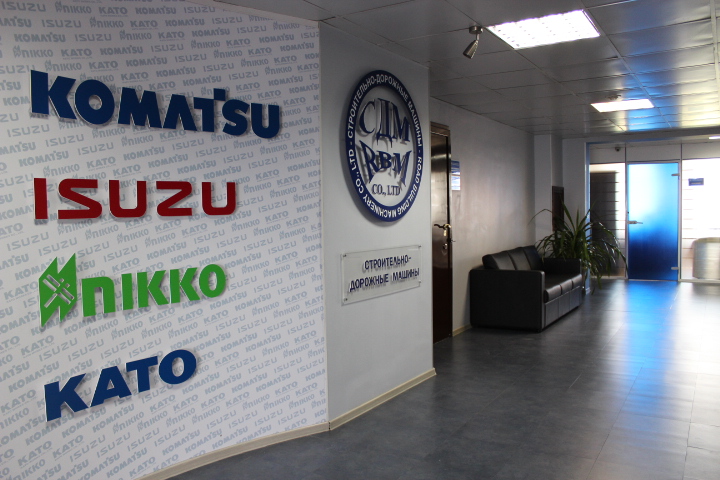
За 12 лет своей работы небольшая компания выросла в холдинг с общей численностью работников в 490 человек и порядка 200 единиц дорожно-строительной техники на продажу, ежегодно поставляемой в Россию. Каждый четвертый импортный бульдозер, продающийся на российском Дальнем Востоке и каждый пятый импортный экскаватор носят логотип ООО "Строительно-дорожные машины". Сегодня мы охватываем такие города, как Южно-Сахалинск, Благовещенск, Магадан, Петропавловск-Камчатский, Хабаровск, Комсомольск, Владивосток и другие.
Изначально ООО "СДМ" поставляло спецтехнику почти десятка мировых брэндов. Однако богатый опыт (в том числе участие в крупных строительных проектах на территории Дальнего Востока) привел компанию к необходимости более жесткой и избирательной специализации: сегодня холдинг "Строительно-дорожные машины" — крупнейший поставщик исключительно японской техники, максимально адаптированной к российским условиям эксплуатации. Такой подход превратил ООО "СДМ" в своеобразный дальневосточный стандарт качества спецтехники, доверяясь которому, покупатель гарантированно приобретает только самые надежные, проверенные, производительные и экономически выгодные модели.
Компания является официальным дилером дорожной техники ведущих японских компаний, импортируя в Россию бульдозеры, экскаваторы и погрузчики KOMATSU, грузовые автомобили ISUZU, буровое и крановое оборудование KATO — продукцию признанных лидеров в мировом производстве дорожно-строительной техники. Кроме того ООО "Строительно-дорожные машины" является дистрибьютором компании NIKKO — крупнейшего японского производителя асфальтовых и бетонных заводов.
Чтобы узнать подробнее о продаже дорожно-строительной техники в городах региона: Хабаровске, Владивостоке, Южно-Сахалинске, Комсомольске, Благовещенске или других, позвоните нам по тел. (4212) 59-06-22 или приезжайте к нам в офис.
www.rbmc.ru
Дорожные машины
Строительные машины и оборудование, справочник
Наш поискДорожные машины
Машины для дорожного строительства
Cиловые передачи дорожных машин
Автогрейдеры в дорожном строительстве
Автогудронаторы 2
Автоматизация дорожных машин
Агрегаты минерального порошка
Агрегаты питания
Асфальтосмесительная установка ДС-4
Бетоносмесители непрерывного действия
Бетоносмесители цикличного действия
Бетоносмесительные установки и заводы
Битумовозы
Битумоперекачивающие установки
Бульдозерно-рыхлительные агрегаты
Бульдозеры, бульдозерно-рыхлителные агрегаты
Бункера для готовой смеси
Буровое оборудование
Валковые камнедробилки
Валочно-накетирующие машины
Вибраторы в строительстве
Вибропогружатели в строительстве
Гидравлические передачи дорожных машин
Грейдеры в дорожном строительстве
Грейдеры, автогрейдеры
Грейдеры-элеваторы
Грузовые автобетоносмесители
Грунтосмесители
Грунтоуплотняющие машины вибрационного и ударного действия
Двигатели дорожных машин
Дозаторы бетона
Дорожное машиностроение в СССР
Дорожные фрезы
Дробильно-размольное оборудование
Камнедробилки ударного действия
Классификация машин для содержания и ремонта автомобильных дорог
Колесные тягачи и шасси в дорожном строительстве
Комбинированные передачи дорожных машин
Комплект машин для строительства бетонных дорог
Комплект машин для строительства бетонных дорог с рельс-формами
Конструктивные показатели дорожных машин
Конусные камнедробилки
Копры в строительстве
Корчеватели
Кусторезы, валочно-пакетирующие машины, корчеватели кусторезы
Машины для зимнего содержания дорог
Машины для летнего содержания дорог
Машины для постройки цементобетонных покрытий
Машины для распределения и укладки каменных материалов
Машины для ремонта асфальтовых дорог
Машины для смешения
Машины для содержания и ремонта автомобильных дорог
Машины для строительства сборных железобетонных покрытий
Машины для строительства улучшенных оснований
Машины для уплотнения грунтов и дорожных покрытий
Машины послойного фрезерования грунтов
Механические передачи дорожных машин
Нагреватели и дозаторы битума
Оборудование для перевозки и хранения цемента
Оборудование для приготовления битумоминеральных смесей
Оборудование для приготовления цементобетона
Оборудование для хранения битума
Оценка технического уровня дорожных машин
Планировочные машины экскаваторы-планировщики
Пневматические передачи дорожных машин
Погрузчики вилочные
Погрузчики многоковшовые
Погрузчики одноковшовые
Полуприцепные и самоходные пневмоколесные и комбинированные катки
Прицепные катки (статические и вибрационные)
Прицепные планировщики
Пылеулавливающие устройства
Развитие механизации дорожного строительства
Разгрузчики железнодорожных вагонов
Распределители цемента
Расчет основных параметров бульдозеров
Расчет основных параметров скреперов
Самаходные асфальтоукладчик
Самоходные катки с гладкими вальцами (статические и вибрационные)
Свайные молотоы в строительстве
Системы управления дорожных машин
Системы управления и автоматизация дорожных машин
Склады цемента
Скреперы в дорожном строительстве
Скреперы прицепные
Скреперы самоходные
Смесительные агрегаты
Сушильные агрегаты
Технико-экономические показатели дорожных машин
Технологические показатели дорожных машин
Типаж дорожных машин и его значение в машиностроении
Тракторы в дорожном строительстве
Установки дробильно-сортировочные
Шаровые мельницы
Щековые камнедробилки
Эксплуатационные показатели дорожных машин
Электрические передачи дорожных машин
stroy-technics.ru
423800, Набережные Челны , база Партнер Плюс, тел. 8 800 100-58-94 (звонок бесплатный)
